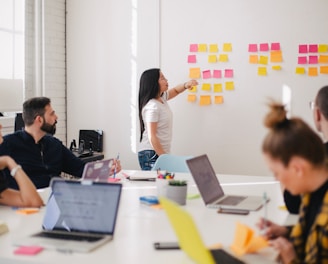Using group data to improve pupil wellbeing using a researcher approach
Hannah Moloney


We all know that what goes on at home affects what happens in school (and vice versa!) Whilst research may suggest that intelligence and educational outcomes remain predictable across a lifespan, the reality is that context matters, our school and home environments matter. And environment can matter more than we give it credit for. In this blog we're going to think about how we can use simple research practice to improve each pupil's environment for learning, and I'll give you some practical steps for how you can develop a meaningful research project in your setting.
When you've been doing screening for as long as I have, and at scale, you have access to a lot of data. Now, some people might roll their eyes at data - and it's natural to feel skeptical or intimidated by data. After all, decisions get made on data and sometimes the data is baaaaad. Reeeeeaaaally bad. If you've read the first chapter of my book, you'll know some of the horror stories from the last century that have deeply affected our classrooms today. Bad data magnified exponentially with life-limiting consequences for millions of people. No thanks.
The truth, though, is that knowledge is power, so we ignore that data at our peril. How you carve up and measure that knowledge is in your power. You have the power to measure and effect change in your environment - for better or for worse. Far from solely relying on the external educational researchers (of which there are many excellent ones!), you can carefully consider what you want to know and design questions which might allow you to effect positive change in your environment. This takes a more 'living theory' approach which allows practitioners to research from their own questions and experiences. For me, one of the questions I wanted to know about was our pupils' sleep habits and how that might be affecting their lives in school.
Exploring sleep and its impact on pupil health and wellbeing
The research is very clear that sleep is critical to overall health and wellbeing. If our pupils aren't getting adequate sleep, their memory, their social skills and their emotional regulation are all likely to be affected. These are known as executive functions and they're basically the skillset that supports our decision-making capacities to ensure our current and future wellbeing. If a bad night's sleep can affect us in the short-term: over-eating, loss of concentration, slower response times, then chronic insomnia and poor sleep hygiene is very likely to negatively impact upon our pupils' outcomes in myriad ways. So I decided to ask them about it....
The No Child is Missed, No Child Misses Out screening process I advocate for uses a variety of different tools to explore pupil profiles: self-assessment questionnaires, standardised tests, observations and one-to-one questioning. And crucially, it advocates for screening everyone. I believe that this is where the real power to effect change lies because we learn from the wisdom of the crowd - of everyone together, not just those who are concerning us. We can use group strength to support individual weakness.
So, in various ways, and at various points in time in the screening process, we asked the following questions:
What time do you go to bed?
How long does it take you to get to sleep?
How much tech do you use after school? And what kind?
Do you have at least one good friend?
Do you find it difficult to concentrate?
Are you happy in school?
The results...
Now, spoiler alert, the results were pretty eye-opening and also completely obvious. There were clear - stark, in fact - links between insomnia, amount of tech use, perceived quality of relationships, focus and attention and happiness in school. All to varying degrees of course, but there nonetheless. And, whilst it's easy to villainise tech usage as a critical factor in these dimensions, we don't know if children and young people are using tech because they feel unhappy, because can't sleep, because they find it difficult to relax, or whether it is indeed tech is causing these responses - or maybe neither, maybe it's just simply chance. To a certain extent, it actually doesn't matter. The fact that in this particular cohort of pupils that we asked had these patterns was enough for me to comment on it. It gave us an indication of our own power to effect change.
So, I averaged the bed time for the year group; and, I reviewed the levels of insomnia in relation to different lengths of tech usage per day. And, there was a clear increase after a certain amount of time per day. Then I summarised the year group information in each child's screening report so that parents and carers had the power to make their own decisions about what to do next. Intentionally, I did not seek to question individual parenting practices and choices, but simply to share the research findings for the group with each family so that parents and carers felt more empowered with the knowledge I gave them. I summarised:
the average bed time for the year group.
the maximum amount of time on tech which seems to have a neutral effect on sleep, happiness and concentration in school.
a description of the average feelings of the cohort if they used tech for longer than the cut-off point or stayed up later than a certain time.
I've had lots of positive feedback from parents about this information because it's helpful information to have. It's useful to know what time other children go to bed. It's really helpful to know what the wisdom of the crowd is when it comes to the amount of time spent on tech in an evening and the real-world impact of late night bed times. It wasn't radical research from a national headlines point of view, but it was meaningful research from a local parental power and choice point of view. The fact that it was data from the pupils in their child's class really hit home.
And, of course, in individual cases, where happiness, focus and concentration, social skills and/or challenging behaviours were an area of focus for school staff and families, it gave us another aspect to consider in our pupil reviews. If sleep and tech use appear to be having an impact, what can we do at home and in school that might positively change that. How can we adapt our environments to help each child flourish?
Using group data in daily research practice
If we were to continue on with this as a research project, we might consider other ways we could share our findings with pupils and parents, and then monitor individual cases or group averages over time, to see how things change, in a kind of assess-plan-do-review approach. The point is, both at home and in school, we have more power than we think. We just need to open our mind to what's possible.
So what's currently bothering you? And what systems do you already have that you can adapt to include some more strategic analysis to help improve progress, behaviour, learning outcomes in your setting? Using a living theory approach might be a helpful framework for analysis.
What is a Living theory approach?
Living theory research is a type of action research which enables a practitioner to research their own practice. Its main idea is that theory emerges from practice, not the other way around. It raises the importance of a cyclical approach of enquiry, action, reflection; enquiry, action, reflection (repeat) to address real classroom challenges, and to empower teachers to be researchers and knowledge creators.
The lovely thing about living theory is that, in terms of evidence, anything goes - so long as you can justify it. In this respect, it is methodologically inclusive and you can incorporate all different types of data. The primary goal is that the process and outcomes allow practitioners to understand and improve their practice, regardless of whether the data comes from quantitative, quantitative or mixed methods.
The key principle in living theory is that the data should be meaningful and useful for understanding your practice and its effects. The emphasis is on triangulation though - using multiple forms of evidence to build a richer, more complete understanding of what's happening in your practice, or in your setting. And, it should take a cyclical approach so you gather data over time, review it and adapt practice, and review again. This is how you know you're making a difference.
The benefits of Living theory are:
it addresses real classroom challenges
it empowers teachers as knowledge creators
it bridges the research-practice divide
and it's particularly valuable in special educational provision where individualised approaches are essential
Be professionally curious...
The important thing is to be curious. Instead of feeling frustrated and overwhelmed by the problems you face, it can feel incredibly empowering to wonder why things are, and how things might look different. Looking for patterns in your practice or in the school, is a great place to start. In noticing the patterns, ask yourself "what is drawing my attention here? why am I concerned by this?" and then start to consider the variables you have that you might be able to influence in enacting change.
A good question you want to answer might come from something that emerges from your own practice; something that is important to you as a leader in education; something that you know you can influence and it will be something that allows you to come up with or trial multiple approaches and solutions. Keep a journal, jot down recurring challenges and successes, talk with colleagues, look for gaps between what is important to you and what is not yet where you'd like it to be.
Don't forget to write it down as you go
To evaluate whether you're making a positive difference, you need a baseline from which to measure change. In articulating the problem into words, it can crystallise the issues and reveal future steps and pathways that you want to take. It might allow you to hypothesise and find areas of focus that you want to test. And these thoughts and reflections at an early stage can provide you with evidence for later analysis. When you do eventually come back around to the reflection stage, you may wish to evaluate your results through student work samples, observations, and self-assessment tools.
Research demands high expectations of ourselves
And this includes thinking about how we're going to systematise the research (planning, personal deadlines, communications to others) as well as where we're going to store this information and how we're going to keep it safe and respectful of the participants (even if they are unknowingly part of your project.) Be flexible and focused. You may need to adapt because of the nature of the problem or situations you encounter. This is ok!
How are you going to measure your desired impact?
You might use:
Quantitative measures (test scores, frequency counts, time tracking)
Qualitative observations (behaviour changes, engagement, student feedback)
Artifacts (work samples, photos, recordings)
Reflective data (your own learning and growth)
You might explore:
Before and after comparisons
Pattern recognition
Triangulation of different data sources
Student voice and perspective
You might consider:
Looking for unexpected results
Identifying what worked, what didn't, and why
Recognising contextual factors that influenced outcomes
Preparing for the next cycle of enquiry
From evidence to understanding, and from understanding to positive change
Once you've considered your evidence, you may find you have developed a personal theory of practice: something that makes sense to you and has enabled you to foster the desired change. You can then share this with your colleagues and other stakeholders, perhaps connecting your own findings and learnings with broader principles within education or psychological research. As you celebrate your research successes, you might notice further improvement that could help develop your research project further, and so it begins again.
Although talking about your research with other professionals in the field might seem grand, or intimidating, actually this is also where the power of your influence lies. You can do good alone, but you can do even more good when you join together with someone. Find a colleague in your setting who is curious and enjoys reflective practice, like you. Enjoy the conversations you might have and where they'll take you. When we work as a field of researchers in education, and share our findings together, that's where huge change can happen, which is why I encourage you to tell me about it so I can share your research with the others reading this blog. Together, we can make a massive difference!
Are you ready to capitalise on your pupil data?
Here are some useful links related to this article...
Read other related blogs...




Group data to inform teacher CPD and practice
Group data to inform future investment needs
© 2025. All rights reserved.
Subscribe to the NCIMNCMO community & access the free Get Started files today!
By submitting, I am agreeing to the Terms of Use and Privacy Policy.
All advice on this website, including links to external websites, is provided in good faith to help and support you in developing an effective screening process in your setting. It is not intended as a complete substitute for specialist advice for an individual so we encourage you to seek expert guidance if you are concerned about a child or young person. For more information, please read our full Disclaimer here.
